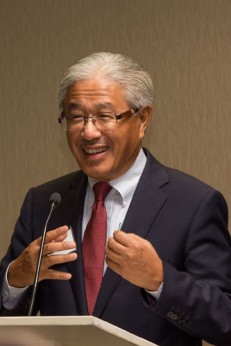Related Posts
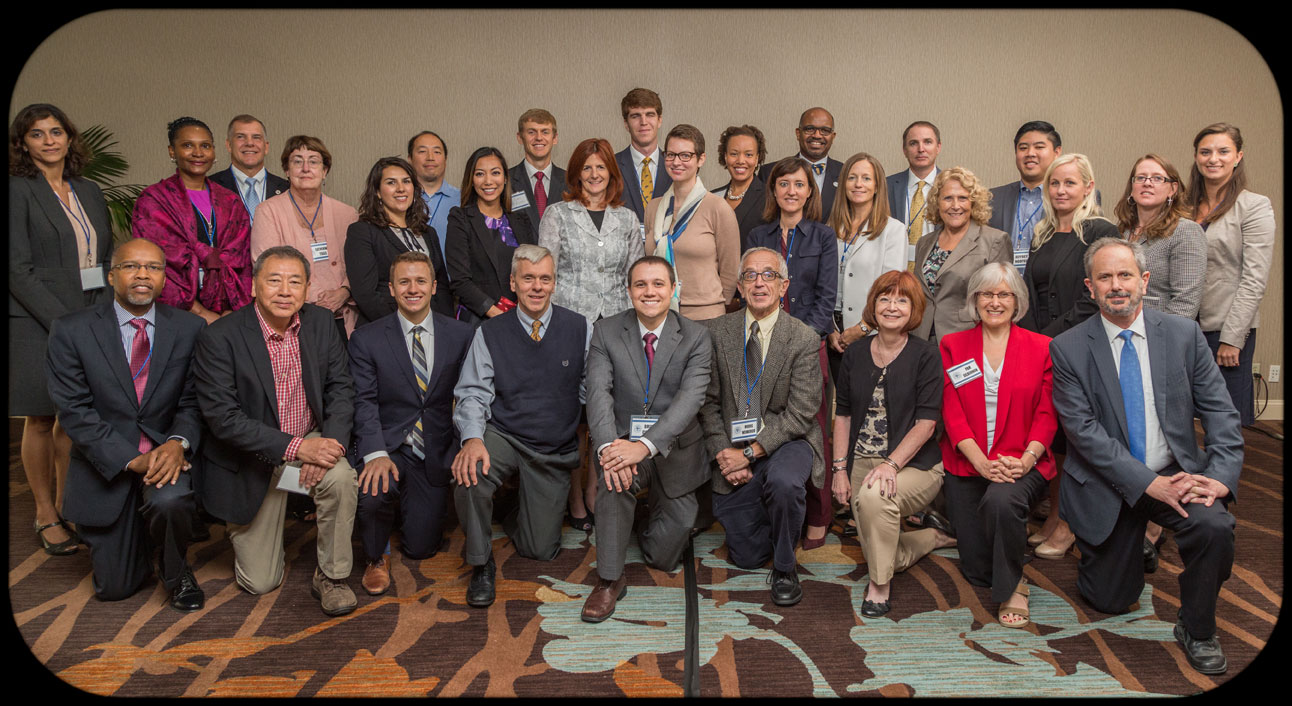
Health policy and management alumni and faculty members gathered for a group picture at the Sept. 16 educational symposium, part of HPM’s 80th anniversary celebration. From left to right, front row: Abraham Segues, Tom Wong, Spencer Brady, Karl Umble, Brian Cooper, Morris Weinberger, Sandy Moulton, Pam Silberman, Bruce Fried; second row: Sandhya Gopal, Vanessa Thomas, Bill Gentry, Catherine Fogle, Sarah Lahidji, Mike Lin, Veronica Getz, Eddie Alcorn, Karen Kmetik, Pat Phillips, Jasmine O’Connell, Dana Weston, Emily Einstein, Jeffrey Simms, Anne Jacobs, Jay Kennedy, Deborah Fritz, Jeff Nguyen, Callie Gudeman, Tamyra Porter, Nicole Murrell. All event photos by Shelly Booker Photography.
On Friday, Sept. 16, Victor Dzau, MD, president of the National Academy of Medicine (NAM), formerly the Institute of Medicine, presented the keynote lecture to celebrate the 80th anniversary of the Gillings School’s Department of Health Policy and Management.
Dzau, who also serves as chair of the health and medicine division committee of the National Academies of Sciences, Engineering and Medicine, is chancellor emeritus for health affairs and James B. Duke Professor of Medicine at Duke University and past president and chief executive officer of the Duke University Health System. His daughter Jacqueline received a Master of Public Health degree from our School. I admired Dzau’s brilliant leadership at Duke and now at the NAM, of which I am a member. He is an awesomely talented individual who is the perfect translational scientist and transformational leader.
Dzau spoke knowledgeably and thoughtfully about the challenges and opportunities of population health, an area in which we are seeking the right approaches and strategies. He pointed to past and current NAM reports that are relevant to and influential for public health. He also encouraged us to think about the potential of convergence science in solving big public health challenges and referred to an MIT report on convergence science: Convergence: The Future of Health. It’s a fascinating report and a good read. How we approach and collaborate in and beyond disciplines is critical to our capacity to solve some of the world’s greatest health threats and problems. When I was at the National Cancer Institute, our division helped to catalyze the use of transdisciplinary science. (See the work of Julie Thompson Klein, PhD, on cross-disciplinary team science.)
According to the authors of the MIT report:
Convergence comes as a result of the sharing of methods and ideas by chemists, physicists, computer scientists, engineers, mathematicians and life scientists across multiple fields and industries. It is the integration of insights and approaches from historically distinct scientific and technological disciplines. Convergence is a broad effort across the sciences that will play a crucial role in many fields of endeavor. …[I]t needs to be applied to help solve many of the world’s grand challenges.
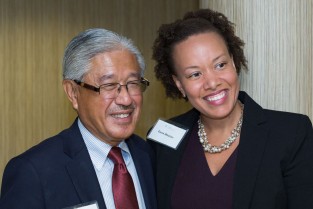
HPM alumna Dana Weston, president and chief executive officer of Morehead Memorial Hospital (right), posed with keynote lecturer, Dr. Victor Dzau.
We’re living in an era of huge advances in technology, which provide us with “big data” and enable us to create large data sets that might help us, for example, to understand why some people get cancer and others do not. Until now, people operated largely in data silos, but sharing has the potential to create threads between the silos. It’s incredibly exciting, and new discoveries can result from these approaches. Vice President Biden pointed to data silos as a rate-limiting step in accelerating progress against cancer. The Cancer Moonshot Blue Ribbon Panel Report 2016, compiled by the Blue Ribbon Panel on which I served (along with Deborah Mayer, PhD, RN, professor of nursing at UNC), recommended entirely new ways of thinking about cancer-related data to achieve the goal of preventing and curing cancer. Convergence science transcends data sharing, but big data is an example of our potential to gain new discoveries by bringing new minds and disciplines to bear on big problems.
We should engage in a larger conversation about the potential of convergence science and public health.
Barbara
From the Executive Summary of
Convergence: The Future of Health
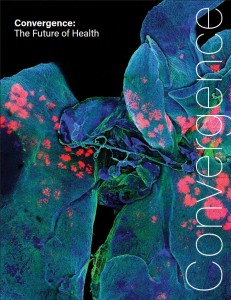 The prevalence of smart devices makes it possible to begin to collect such data, either through voluntary consumer input of data or collected by wearable or implantable sensors. Apps to do just that for research purposes (with consumer consent) are being developed, and consumers in large numbers are already volunteering their data. The convergence of smart mobile devices, increasingly powerful sensors—that can detect genetic syndromes from facial recognition software or test for Parkinson’s disease from vocal patterns—and machine learning algorithms have the potential to improve medical diagnosis and decision-making.
The prevalence of smart devices makes it possible to begin to collect such data, either through voluntary consumer input of data or collected by wearable or implantable sensors. Apps to do just that for research purposes (with consumer consent) are being developed, and consumers in large numbers are already volunteering their data. The convergence of smart mobile devices, increasingly powerful sensors—that can detect genetic syndromes from facial recognition software or test for Parkinson’s disease from vocal patterns—and machine learning algorithms have the potential to improve medical diagnosis and decision-making.
June 2016, Cambridge, Massachusetts.
This material may be freely reproduced.
Download this report at ConvergenceRevolution.net
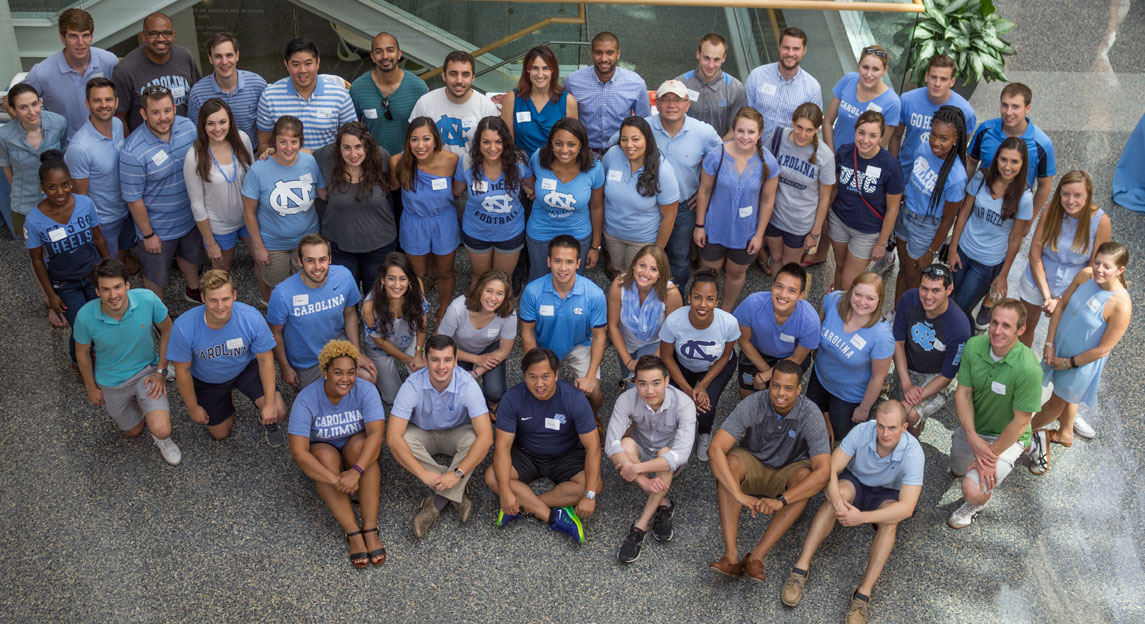
Health policy and management students and alumni gather in the School’s atrium with department chair Dr. Daniel Lee (third row from the front, in cap) and Jeffrey Simms, clinical assistant professor and director of professional development and alumni relations (fourth row, second from left).

